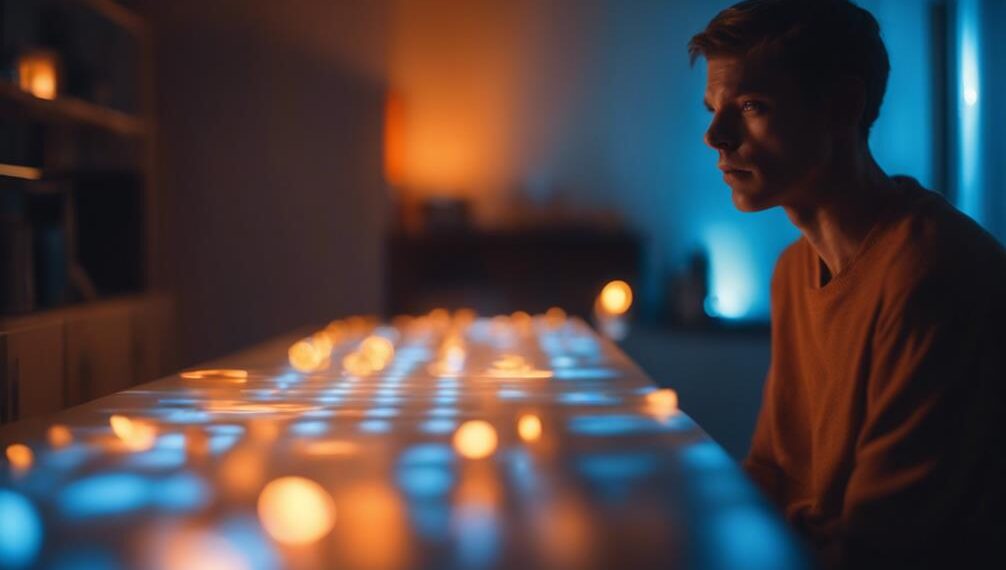Have you ever wondered how human centric lighting truly impacts our circadian rhythms?
The intricate relationship between light exposure and our internal body clock goes beyond simple illumination. By exploring the mechanisms behind this phenomenon, we can start unraveling the profound effects that light, particularly its spectrum and intensity, has on our sleep patterns and overall well-being.
But how exactly does this connection play out, and what implications does it hold for our daily lives?
Key Takeaways
- Blue light exposure impacts melatonin production and circadian rhythms.
- Smart lighting can mimic natural light to support better sleep.
- Excessive blue light disrupts body clock synchronization.
- Consistent timing and mindful lighting design enhance circadian health.
The Role of Light Spectrum
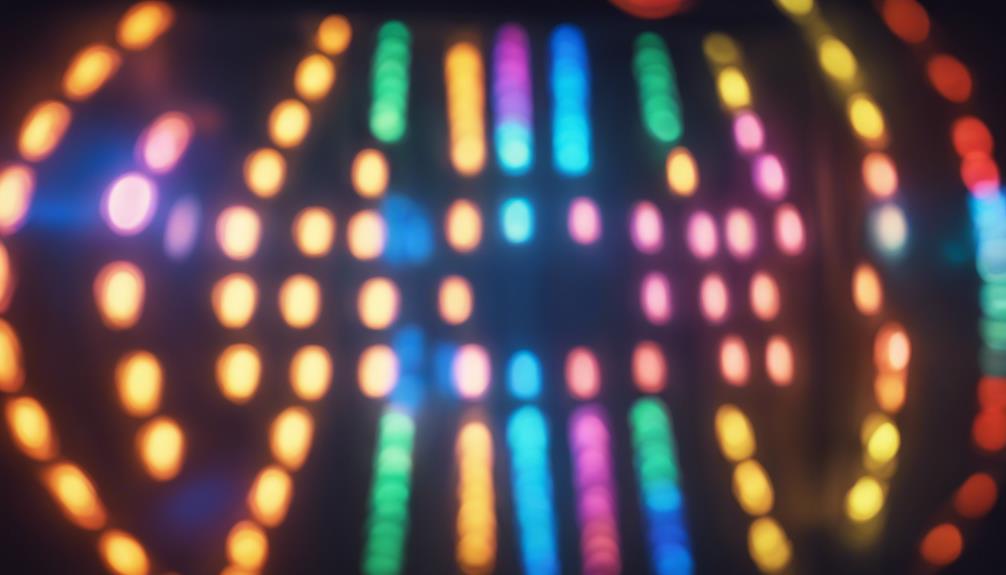
When considering the impact of light on our circadian rhythms, the specific spectrum of light plays a crucial role in regulating our biological clock. Blue light, a key component of natural sunlight and many artificial light sources, has been shown to have a significant effect on our circadian rhythm. Exposure to blue light during the day helps us stay alert and energized, as it inhibits the production of melatonin, the hormone responsible for making us feel sleepy. However, excessive exposure to blue light in the evening can disrupt our circadian rhythm by tricking our bodies into thinking it's still daytime, making it harder to fall asleep.
Understanding the influence of blue light on our circadian rhythm is essential in today's world, where we're constantly surrounded by artificial lighting, especially from screens like phones, tablets, and computers. By being mindful of our exposure to blue light, particularly in the hours leading up to bedtime, we can better align our biological clock with natural light-dark cycles, promoting healthier sleep patterns and overall well-being.
Influence on Melatonin Production
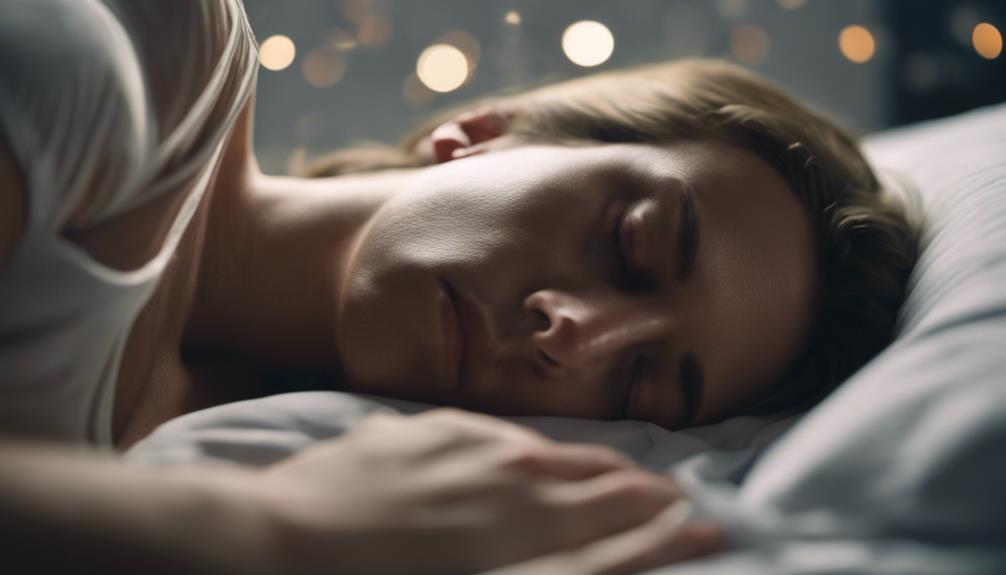
The impact of blue light on our circadian rhythms extends to its direct influence on melatonin production, a key hormone that regulates our sleep-wake cycle.
- Melatonin Regulation: Blue light exposure at night suppresses melatonin production, signaling our bodies that it isn't yet time to sleep.
- Circadian Disruption: Excessive exposure to blue light from artificial sources in the evening can disrupt our natural circadian rhythm, leading to difficulties falling asleep.
- Shift Work Challenges: Individuals working night shifts or in environments with irregular lighting patterns may experience melatonin regulation issues, impacting their overall sleep quality.
- Smart Lighting Solutions: Implementing human-centric lighting solutions that mimic natural light patterns can help regulate melatonin production, promoting healthier sleep-wake cycles and overall well-being.
Understanding how blue light affects melatonin regulation is crucial in designing lighting environments that support our natural circadian rhythms, ultimately enhancing our quality of sleep and overall health.
Impact on Body Clock
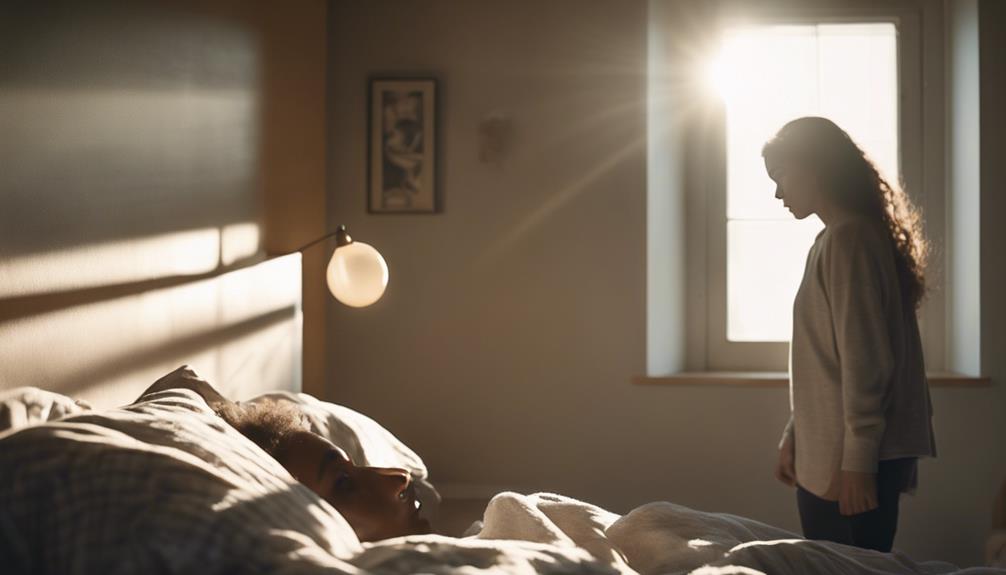
Blue light exposure from artificial sources can significantly impact the synchronization of our body clock, influencing our overall circadian rhythms and daily physiological processes. Circadian disruption caused by excessive exposure to blue light, especially during the evening, can lead to health effects such as sleep disturbances and mood disorders. Our bodies are finely tuned to respond to the different wavelengths of light, with blue light being particularly influential in regulating our internal clocks.
To mitigate the negative impact of blue light on our body clock, technology solutions and thoughtful lighting design are crucial. Using warmer, less intense lighting in the evening and reducing blue light exposure closer to bedtime can help in maintaining a healthy circadian rhythm. Incorporating adjustable lighting systems that mimic natural daylight patterns throughout the day can also aid in regulating our body clock and promoting better sleep quality.
Regulation of Sleep-Wake Cycle
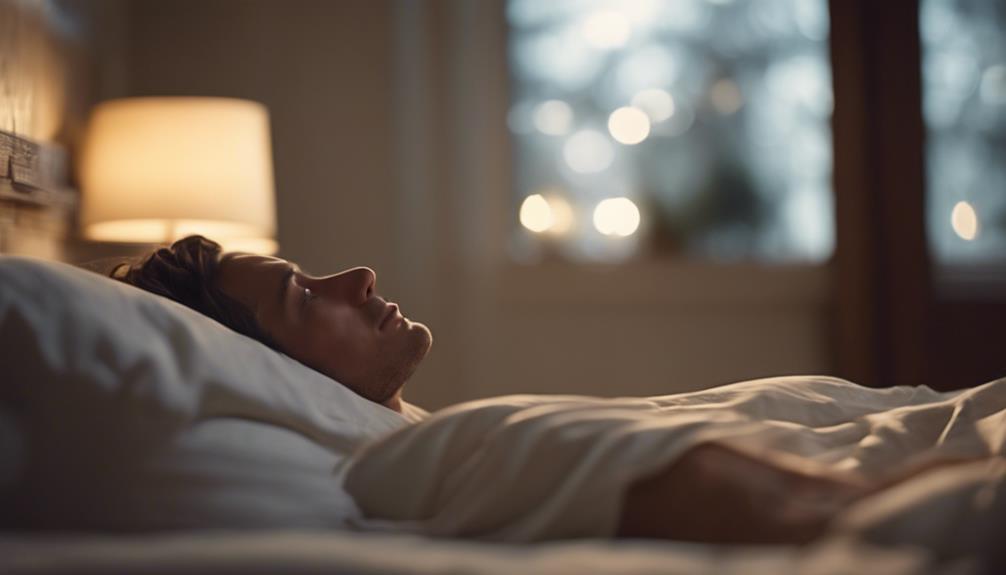
Excessive exposure to artificial light sources, particularly during the evening, can disrupt our body clock, affecting the regulation of our sleep-wake cycle. This disruption can lead to difficulties falling asleep, decreased sleep quality, and altered alertness levels during the day.
Here are four key ways in which artificial light impacts our sleep-wake cycle:
- Melatonin Suppression: Artificial light, especially blue light emitted by screens, can suppress the production of melatonin, a hormone that regulates sleep-wake cycles.
- Delayed Sleep Phase: Exposure to light in the evening can delay the onset of the body's natural sleep phase, making it harder to fall asleep at night.
- Fragmented Sleep: Artificial light can cause more awakenings during the night, leading to fragmented sleep patterns and reduced overall sleep quality.
- Daytime Alertness: Disrupted sleep-wake cycles due to excessive artificial light exposure can result in decreased alertness levels and impaired cognitive function during the day.
Understanding how artificial light affects our sleep-wake cycle is crucial for maintaining healthy sleep patterns and optimal alertness levels throughout the day.
Importance of Timing
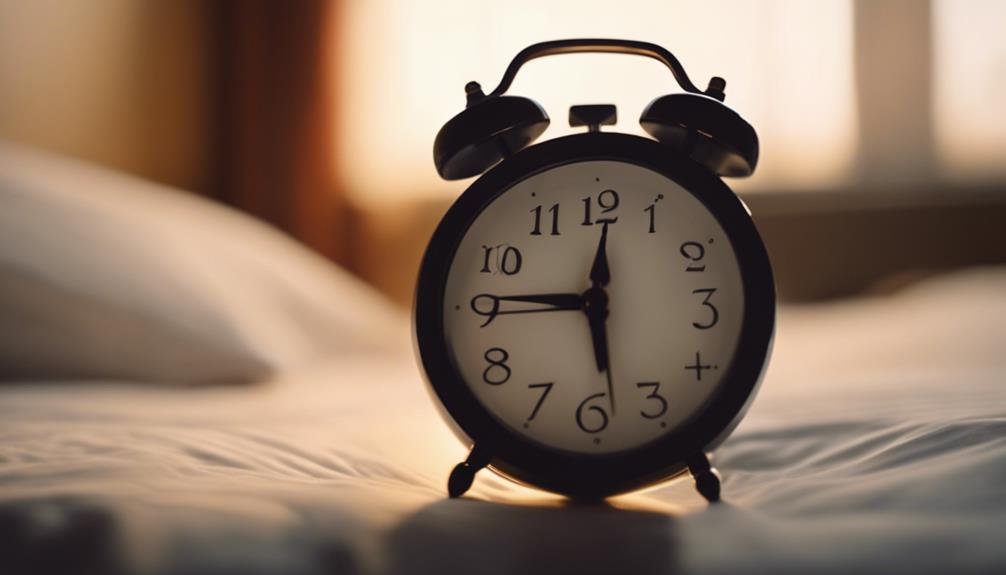
In understanding the impact of artificial light on our sleep-wake cycle, timing plays a critical role in maintaining healthy circadian rhythms. Circadian disruption can occur when our exposure to light isn't aligned with the natural patterns of daylight and darkness. Our bodies rely on cues from the environment, particularly light, to regulate our internal clocks effectively. Therefore, adhering to a consistent lighting schedule is essential for supporting our circadian rhythms.
Lighting schedules that mimic the natural progression of light throughout the day can help reinforce our internal body clocks, promoting better sleep quality and overall well-being. By exposing ourselves to bright light during the daytime and minimizing exposure to artificial light, especially blue light, in the evening, we can optimize our circadian rhythm alignment. This alignment not only improves our sleep but also impacts our mood, cognitive performance, and overall health.
Incorporating a mindful approach to our lighting habits and considering the timing of light exposure can significantly mitigate circadian disruption, leading to a more balanced and harmonious relationship with our sleep-wake cycle.
Frequently Asked Questions
How Does Human Centric Lighting Affect Mood and Productivity?
When it comes to human-centric lighting, its impact on mood enhancement and productivity boost is significant. By mimicking natural light patterns, this innovative approach positively influences our well-being and efficiency.
The ability to adjust lighting intensity and color temperature throughout the day helps regulate our circadian rhythms, leading to improved mood and increased productivity. These subtle changes in lighting can truly make a difference in how we feel and perform.
Can Human Centric Lighting Help With Seasonal Affective Disorder (Sad)?
Absolutely!
Light therapy, often delivered through human centric lighting, can be incredibly effective in treating Seasonal Affective Disorder (SAD). Research shows that approximately 85% of people with SAD experience relief from their symptoms through light therapy.
This treatment helps regulate circadian rhythms disrupted by the changing seasons, boosting mood and energy levels. It's an innovative and accessible way to combat the winter blues and improve overall well-being.
What Are Some Potential Long-Term Health Effects of Disrupted Circadian Rhythms?
Disrupted circadian rhythms can lead to various potential consequences on our health, including increased risk of obesity, diabetes, cardiovascular issues, and mental health disorders. These health risks underscore the importance of maintaining a stable sleep-wake cycle.
Consistent exposure to human-centric lighting, which mimics the natural daylight cycle, can help regulate our circadian rhythms and mitigate these long-term health effects. Prioritizing our body's natural clock through lighting interventions can significantly impact our overall well-being.
Are There Any Specific Guidelines or Best Practices for Implementing Human Centric Lighting in Different Environments?
Implementing human-centric lighting in various settings presents several challenges. Lighting design must account for environmental factors and user preferences to be effective. Best practices involve customizing light intensity and color temperature throughout the day to mimic natural sunlight.
Balancing these aspects in different environments requires careful planning and consideration. By incorporating user needs and surroundings into the design, human-centric lighting can positively impact well-being and productivity.
How Does Human Centric Lighting Compare to Other Methods of Regulating Circadian Rhythms, Such as Medication or Behavioral Therapy?
When comparing human centric lighting to medication options or light therapy for regulating circadian rhythms, human centric lighting stands out for its non-invasive nature.
Light therapy often involves specific light exposure at certain times, while medication can have side effects.
Human centric lighting, by mimicking natural light changes, can help regulate our internal clocks more naturally, promoting better sleep and overall well-being.
How Does Human-Centric Lighting Impact Circadian Rhythms and Sleep Patterns?
Human-centric lighting plays a crucial role in enhancing sleep with lighting by regulating circadian rhythms and sleep patterns. The right type of lighting can positively influence melatonin production, mood, and alertness, leading to better sleep quality and overall well-being.
Conclusion
As we navigate through the intricate dance of light and darkness, it becomes clear that human centric lighting isn't just about illuminating our surroundings, but also about guiding our internal rhythms.
Like a conductor leading a symphony, the spectrum and timing of light play a crucial role in orchestrating our circadian harmony.
Let's embrace the transformative power of light, allowing it to sculpt our days and nights with precision and grace.

